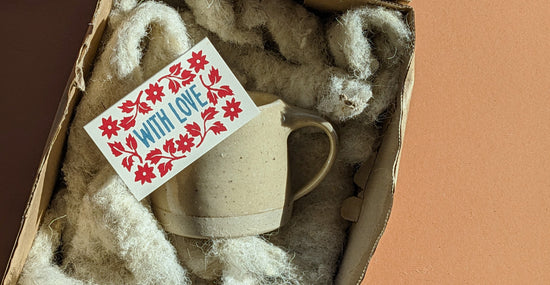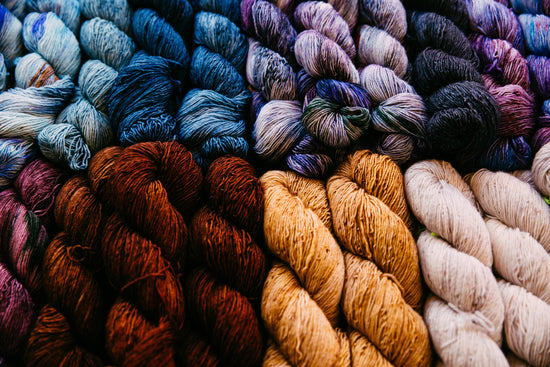Why do sheep need to be sheared? Why are British sheep farmers leaving wool stored in sheds rather than selling it?
We caught up with a local British sheep farmer Jonny to get the lowdown on sheep shearing, the wool market, and how British farmers are getting fleeced.
It was a conversation with Jonny that first sparked the idea for WoolShip. So we were eager to talk to him about all things wool. Here he takes us through why British farmers are having to pay to dispose of this incredible natural by-product, and why using British wool is so important.
[A word of warning; there is some mention of maggots below…]
You inspired Matt’s idea for WoolShip - how?
Jonny: It all started from a post I put up on Facebook, criticising the price British sheep farmers get for their wool. The post got a lot of attention, and I got asked to speak on Radio Devon, in a joint interview with the chairman of British Wool. Matt and I chatted about the interview and he started thinking about ways in which British wool could be used.
How did you get into sheep farming?
Jonny: Farming has been in my family for generations. My grandparents owned a farm in Norfolk for years When they retired, they bought a small 20 acre plot here in Devon. Grandad always had sheep and we have carried on the business.
Today we have around 1200 sheep and rent a further 600 acres to graze our sheep on throughout the year. As well as the sheep, we also have a feed business that produces hay and straw for the equestrian market.
Do you rear the sheep for their wool?
Jonny: No. We have the sheep for meat production, so the wool is just a by-product. Most of our meat goes to a brand who supplies lamb to M&S and Tesco.
We value the welfare of our lambs highly. As well as breeding our own sheep, we buy lambs from the North of England, who thrive in Devon’s warmer climate. We send the lambs to a local abattoir we trust because we are confident in their high standard of care.
How has the market changed for British wool?
Jonny: We’ve seen a big difference in the British wool market over the last 10 years or so.
In the past, the price farmers received for the wool would cover the cost of shearing and make a small profit. But today, the price we get for our would barely covers 20% of the cost of shearing.
Why do sheep need to be sheared?
Jonny: Sheep need to be shorn at least once a year. This is firstly to keep them cool in the warmer months so that they don’t overheat. The fleeces then regrow again in time for winter.
But it’s also a question of health and hygiene. Long fleeces get very dirty, which encourages bottle flies to lay their eggs in it. These maggots can prove fatal if untreated.
[Thanks Jonny. Don’t think we want to go into any more detail here…]
How does the sheep shearing process work?
Jonny: When we shear depends on lambing season. We don’t shear the sheep whilst they are nursing lambs. So we usually shear the adult sheep in June.
If we have bought in new lambs, these need to be shawn at the beginning of autumn. During winter the sheep graze on forage crops and long fleeces can get wet and dirty whilst they are foraging.
We have to hire contractors to shear the sheep each year, which means additional finance and labour. There are usually at least 2 or 3 shearers, who bring their own shearing trailer.
The farmer and farm workers then round up the sheep. One person will guide the sheep onto the trailer, whilst another collects the wool after it’s been shorn. They then roll it and bag it to keep it clean and clear of the shearing trailer.
Each sheep takes around 1-2 minutes to shear. This year for example, the ewes cost £1.55/sheep to shear. But farmers only get paid 20 or 30p per sheep for the wool, depending on the grading. So farmers are paying to produce the wool, and selling at a loss.
Why do you think wool consumption has changed?
Jonny: There is so much British wool available on the market that British sheep farmers can’t charge a premium unless they have a niche.This might be a special type of wool for example.
Wool clothing has become a thing of the past, as clothing is increasingly made with synthetic materials instead. Lot’s of wool goes into carpet and bedding. However, with hard-flooring becoming more popular, even carpets are used less and less nowadays.
Back in the 1940s, when my granddad was farming in Norfolk, the market for wool suddenly changed due to the war. Warm woollen clothing needed to be produced for the soldiers, so wool was in high demand.
My grandad had an entire outhouse full of unused wool at the time, which he sold, and with the money he got for it, he was able to buy a tractor! Prices like that are unheard of now.
What do you think wool could be used for in the future?
Jonny: As people look to improve the energy efficiency of their houses, I think wool insulation could be a popular eco-friendly option for new housing.
Wool is naturally flame-retardant, as well as being an insulator, so it would be a safe and sustainable option for home insulation. And WoolShip’s idea of using it for packaging is a great way forward.
[We agree, Jonny.]
Who are your main buyers for wool?
Jonny: All wool produced in the UK is bought by British Wool. British Wool then collects, grades, markets and sells the wool, on behalf of the sheep farmers, to the international wool textile industry for use in flooring, furnishings and apparel.
The price paid to the farmers depends on the grading given to it by British Wool when they weigh and grade it.They then pay a set amount per kilo.
What happens to wool that isn’t sold?
Jonny: Wool is not flammable, so it can’t be burned.It also doesn’t rot easily. We sell to British Wool simply to get rid of it, as otherwise it takes up a great amount of storage space.
One of my shed’s is still full of wool that I haven’t had a chance to sell yet, since it just isn’t a priority due to the prices we get. But we have to sell it to make space for the sheep when they come indoors during the winter.
Since the market in the UK is dwindling, British Wool exports a lot of wool to China, where there is more demand for it. So by finding a way to use wool in the British market, you reduce the carbon cost of transporting the wool such a long distance.
Campaigning for British Wool
Thanks Jonny for that woolly fascinating insight into the life of British sheep farmers.
We feel re-inspired to find new ways to put British wool to use in the UK, to not let this natural by-product go to waste. Where there’s a wool, there’s a way.
You can help support British sheep farmers by choosing wool instead of synthetic alternatives.
Graze through our wool packaging options here.
P.S. Just in case you were wondering, the sheep in the image above are a rusty brown colour simply because they live in Devon fields, with red Devon mud.





